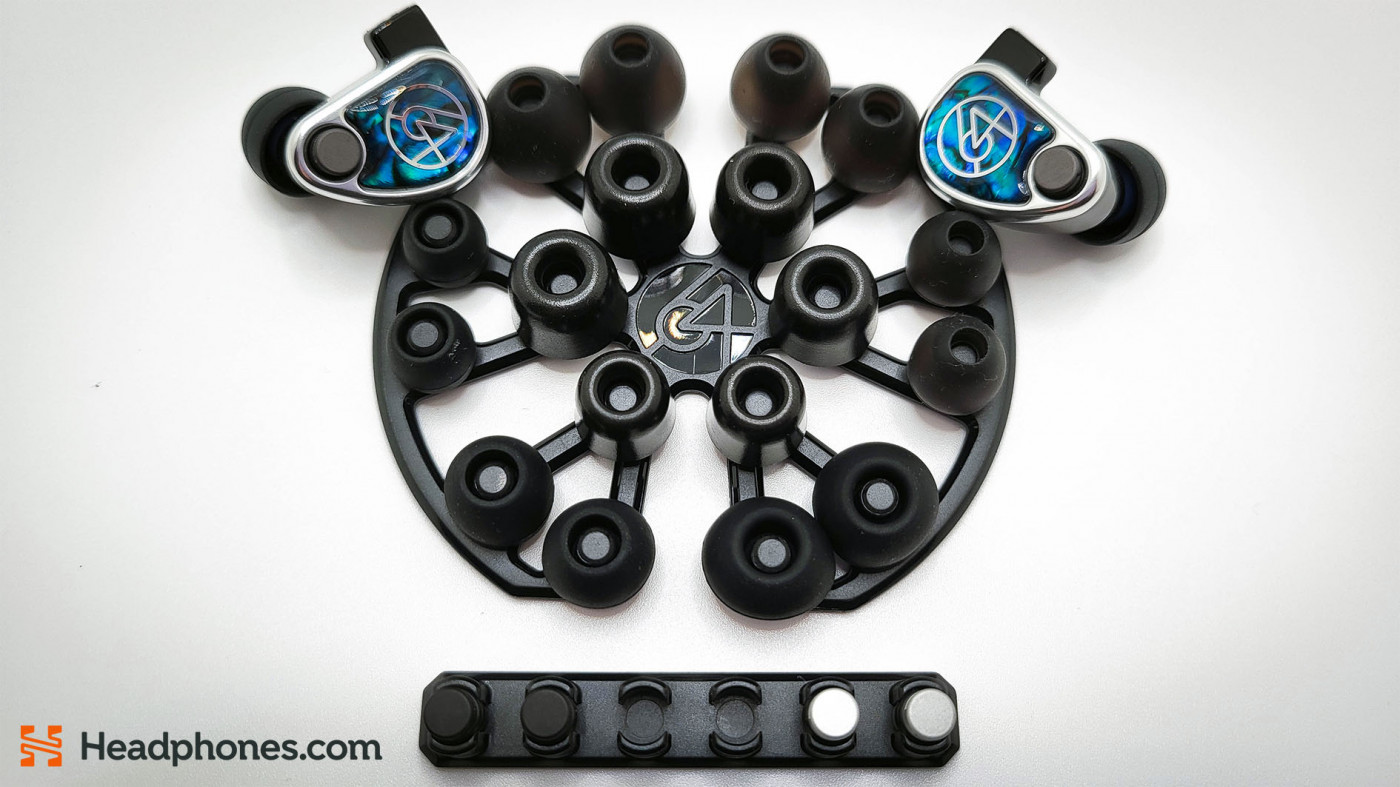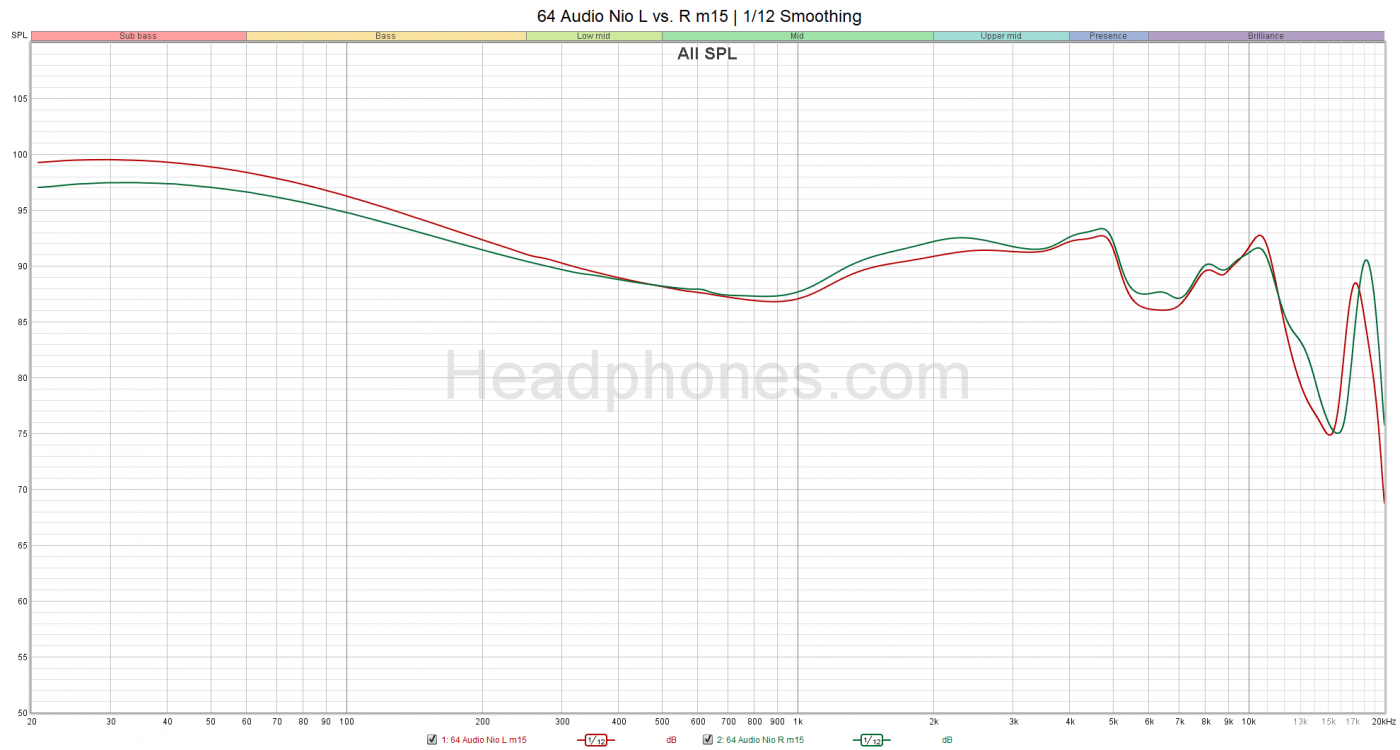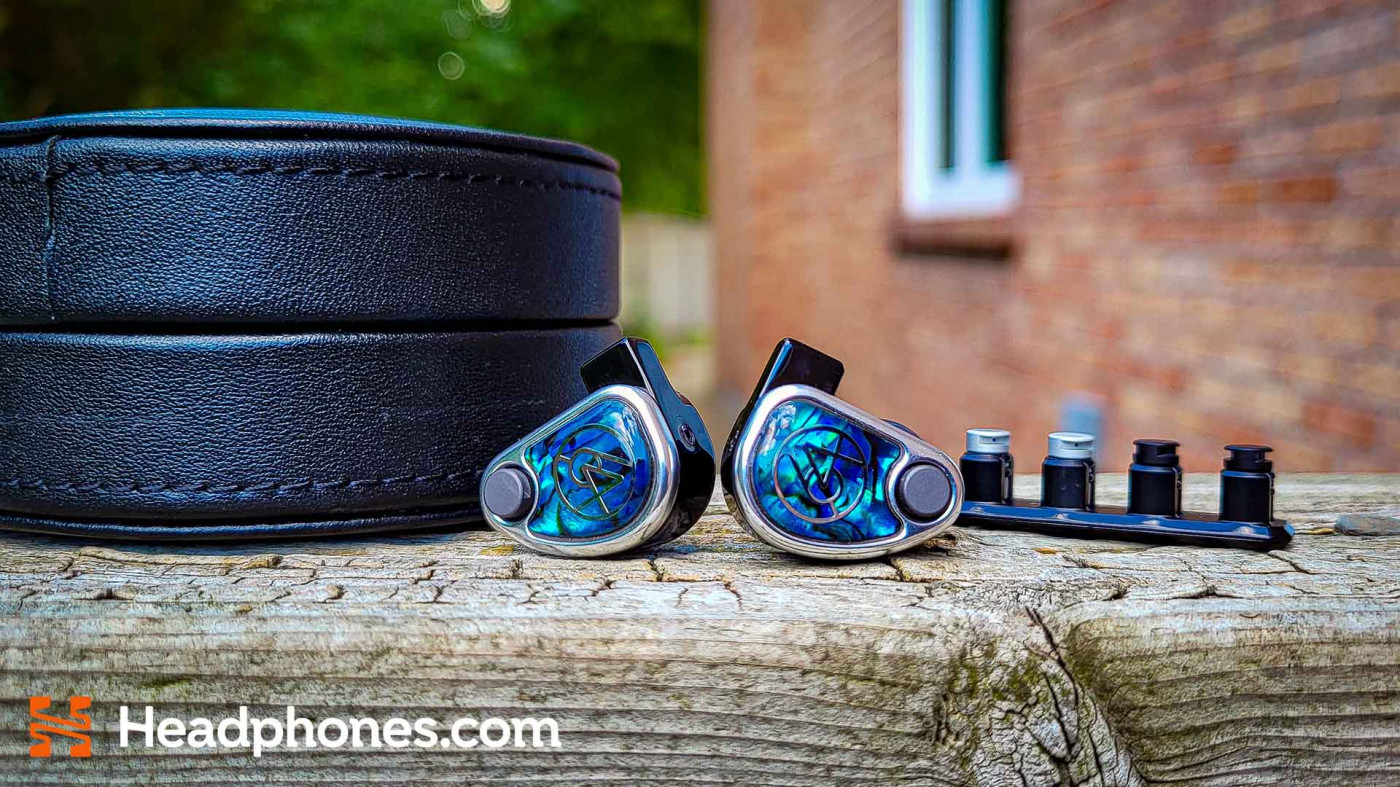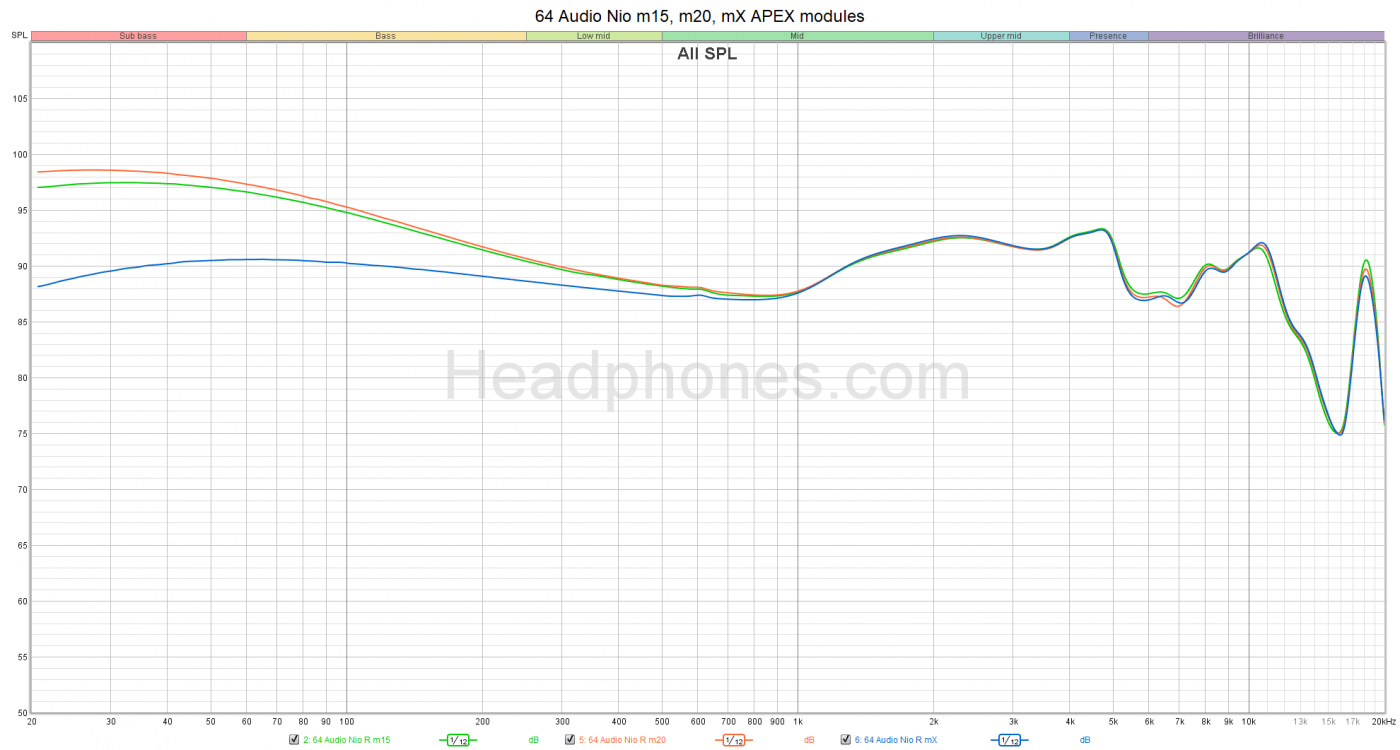64 Audio Nio Review: The Triumph of Bass

64 Audio Nio Review
Written by Fc-Construct
Introduction
The 64 Audio Nio is the next IEM on my journey through the 64 Audio line-up. Coming in at $1,699, the Nio is the first hybrid IEM that incorporates 64 Audio’s APEX system similarly found in the U6t, U12t, and U18s. Boasting a 1 DD + 8 BA driver set-up, the Nio has a lot to live up to given its 64 Audio heritage and promise of a hybrid sound. Let’s see if the Nio can live up to the task and how (if) it may differentiate itself from its brethren.
- Product Summary
- Accessories and Build
- Frequency Response and Tuning
- Instrument Notes
- Presentation
- APEX Modules
- Conclusion
64 Audio Nio - Product Summary
- Reasons to buy
- Extremely Enjoyable Basshead Tuning
- Superb Imaging and Great Soundstage
- Top-Tier Resolution and Bass Dynamics
- Reasons not to buy
- Lacking Treble Brilliance
 |
Get the 64 Audio Nio for the best available price at headphones.com. |
What’s in the Box
Like the other 64 Audio IEMs, the Nio has an ergonomic metal shell. There is a large vent at the top along with the APEX modules to alleviate pressure build-up for in-ear comfort over long listening sessions. The faceplate has a striking blue abalone design and is probably my favorite of all the 64 Audio IEMs so far.
The Nio comes with 64 Audio’s standard suite of accessories:
- Two different sets of silicon and one set of foam tips S/M/L sizes all held in a fancy circular tip holder. For this review, I opted to use the Azla Sedna tips as the stock tips didn’t fit me too well and I had used these tips for my other 64 Audio IEM reviews.
- The m20, m15, and mX APEX modules which modify the bass response of the Nio depending on which you choose. I will be using the m15 module for the majority of this review as that is the “default” set.
- 8-core braided 2-pin cable with pre-molded earhooks. This is the same cable that came with the Duo and is what 64 Audio is presumably using for their newer IEMs. It’s an OK cable, a little rubbery and has some cable memory but not one I’d immediately swap out like the older stock cables.

Frequency Response and Tuning
My first impression of the Nio was two-fold. First was wow, that’s a lot of bass. The bass of the Nio is front and center, giving it an L-shaped tuning. However, it doesn’t completely butcher the midrange. Lower mids are definitely thick and the upper mids pulled back but maintain sufficient clarity. The treble is polite and secondary to the bass driven spectacle. It has a highly engaging sound that makes you want to continually listen to it.
The second thing that was immediately noticeable was the soundstage and imaging prowess. Like the other 64 Audio IEMs, the Nio has an expansive soundstage. But its imaging ability is what separates it from the rest. The Nio has a superb ability to place instruments in space and take full advantage of the soundstage.

Frequency response of the 64 Audio Nio using the m15 APEX modules. Measurement taken with an IEC-711 clone microphone. Comparisons can only be made relative to other measurements taken by this specific microphone. A peak at about 8 – 10 kHz is likely an artifact of the measurement rig and may not exist as depicted here. Measurements above 8 kHz are not accurate. If possible, reference multiple measurements.
As expected, the bass is crazy elevated. It does explain just how thick the midrange is. In the upper mids, we can see how enough pinna gain structure to give vocals its natural clarity. The treble is a bit of a roller coaster with a major dip in the lower treble and a mid treble rise before falling off as it approaches the upper treble again. Though the graph indicates a very high upper treble spike, I don’t hear it much. Despite the peaks and valleys, the treble sounds fine to me. Not necessarily tonally perfect by any means but it doesn’t feel lacking on the Nio.
One thing you might have noticed is the channel imbalance in the Nio. The variance is about 1 – 2 dB in the mids and bass. It’s not too noticeable in the bass but the vocals being ever-so-slightly off center if you pay attention. It’s not really an issue but I will admit that it’s a little disappointing to see it in a product that costs this much.
Instrument Notes
Drums
The drums are the standout instrument on the Nio. The weight and impact of each note is hugely satisfying. Kicks and toms boom with a larger-than-life sound. Under the crack of the snare head lies the rich, resonant body of the snare. There is an element of that ol’ “dirty bass” phenomenon where there is bass bloat into the lower mids. It’s far from a clean, incisive affair. The Nio is entirely about pure indulgence.
The attack of each note is heavy with an extended decay in the classical dynamic driver style. There is a shade of bass texture from the driver that gives an added depth to the sound. What’s impressive with the Nio is just how responsive the drums are. Despite the bass dirtiness, the Nio does not struggle in busy songs. Drum notes flow fluidly from one note to the next without a sense of sloppiness. It really feels like you’re sitting behind the drum kit. The stereo imaging is phenomenal. You can easily picture the drum setup and where each tom is located with every hit. I can’t help but nod my head to the beat and picture myself as an overly enthusiastic drummer that snaps a stick in every other song.

In contrast, the hats and cymbals are downright civil. For better or for worse, they sound very much like a recording. There is no illusion of live hats and cymbals. They are very clearly passed through the lens of careful mic’ing, recording, and mixing. That isn’t to say it’s bad. Merely that there the rawness of these instruments are subdued on the Nio. Overall, the hats and cymbals sound fine to me. There isn’t anything I’d immediately point to as an area to be fixed. The lower treble dip de-emphasizes the sharp, crisp attack while the mid treble elevation keeps its harmonics in check. Combined with the significant amount of low-end, cymbals have more of a “brass-y” tone to it rather than sing with a bright brilliance.
Strings and Keys
The bass guitar is great on the Nio. It’s gritty, it’s articulate, and it moves you. It’s a joy to listen to. You won’t get the “pop” and definition of a slap bass if that’s what you’re looking for, however. Electric guitars have a surprising amount of clarity to cut through all the lower mids. The sustained presence in the upper mids until the 5 kHz mark is presumably carrying this clarity.
If you care about the timbre of the piano for classical performances, you’re going to be disappointed. The tuning here is very much for aimed for modern genres, less so orchestral pieces. Acoustic guitars and synths have a thick, almost overly lush sound to them. Listening to the Nio is practically like being immersed with low-end energy. While synth lead lines can get buried in the Nio, acoustic fingering have sharp definition.

Vocals
As with the other instruments, vocals are thick on the Nio. There is no harshness nor sibilance. Vocal separation is very good. Backing vocalists and choral harmonies blend seamlessly with the lead singer yet the character of every contributing voice is distinctly heard. The most noteworthy thing about the vocal presentation is that they sound markedly distant. I wouldn’t exactly call it recessed; it’s more akin to being pulled back. The easiest way to describe it would be if you imagine the vocalist taking a good step back from their microphone and projecting into it rather than holding it right up to their lips. Despite this, they retain admirable clarity. I never feel like I’m straining to hear the lyrics.
Presentation
The Nio’s technical performance does not disappoint. Stage width and depth are excellent though stage height is limited like most other IEMs. The Nio’s imaging is where the magic happens. Oftentimes, headphones/IEMs creates the image that you’re in front of the stage listening to the band. The Nio makes it sound like you’re on stage with the band. I already mentioned how great it is on the drums, but this extends to most every other instrument. Instruments in the periphery are highlighted; electric guitars, cymbals, toms, you name it. The Nio pushes the stereo panning to its limits. Vocals have a depth that goes beyond simply lowering the gain to recess them. It’s a realistic sense of distance, like being a large hall. The Nio’s imaging is nuanced and effortless and honestly impressive given its bass heavy tuning.

The Nio’s resolution, layering, and instrument separation are exceptional. I find it more resolving than the U18s as it uncovers more notes more often. Its resolving ability meets my expectations for a top tier IEM. Layering and instrument separation are seamlessly blended in with the imaging. While the Nio might sometimes present with gobs of bass, instruments are never confused or lost. It’s a very coherent experience.
Finally, let’s talk dynamics. The Nio has one of the best dynamics of the 64 Audio line-up. Of course, it owes a lot of this to its bass response. It emulates the feeling of being in a live room, like you’re saturated in musical energy. This makes the Nio macrodynamically laden which can create lovely moments of contrast in certain songs. For example, in acoustically driven tracks that transition from its climax into a passage of quiet vocals and picked strings. The sudden sound of silence from the dissipation of that saturated bass energy beautifully emphasizes the weight and emotion of the musical shift.
Love our in-depth reviews?
We test and review hundreds of headphones every year. Sign up to get the latest news, reviews, guides, and more in your inbox. Join the 60,000+ like-minded audio lovers who love our newsletter!
APEX Modules – m15, m20, and mX
The Nio is equipped with 64 Audio’s APEX technology which are interchangeable tuning filters that primarily modulate the bass response. There are three sets of APEX filters: the m15 (dark gray), m20 (silver), and mX (black) modules. Each set will run you a cool $100 on 64 Audio’s website. The m15 and m20 modules are very similar with the exception of a tad more subbass elevation on the m20. On the U18s and U6t, these modules do make a small but noticeable difference in the subbass rumble and decay. However, with the ludicrous amount of bass Nio has to start with, the change is more subtle as it has less of an impact on the overall tonal balance. Comparing the two, the m20 does make the Nio slightly weightier in the bass. I prefer the m15 personally to let the music have a little more breathing room from the bass as it can feel a touch suffocating with that much bass.

The mX module transforms the Nio altogether. There is a much greater midbass focus and draws closer to neutral in its tuning. The weight and decay of the drums are diminished though their imaging and responsiveness remains top notch. Vocals are no longer distant but are now front and center. The Nio retains its technical performance but frankly, I think it defeats the point of buying the Nio in the first place. Not that it sounds bad; this sort of tuning is right up my alley. It’s just that there are plenty of options for a neutral, midrange focused IEM while the number of basshead IEMs in the high end are next to none.
Should You Buy It?
Yes. The 64 Audio Nio was a surprise hit for me. It fulfills the promise of a hybrid dynamic driver bass. It's greatly resolving and effortlessly coherent. There's spacious soundstage and superb imaging. It’s a magnificently engaging IEM in a way that makes me reluctant to take them off at the end of a listening session. In fact, this is one of the pieces of few gear I’ve reviewed where I wished I could keep it. I cannot recommend at least trying out the Nio enough.
To be honest, I had initially expected it to cost a lot more than it does. The Nio’s gorgeous faceplate and hybrid 1 DD + 8 BA set-up looked to be prime marketing talking points made to justify a hefty price tag. Add in its niche but fun bass heavy signature and I thought the Nio sat coolly in the $3,000+ range. So I was taken aback that it “only” cost $1,699, putting it in between the U6t and U12t in price. While it’s by no means cheap, the Nio is almost downright reasonable in the world of luxury audio. If you’re looking for an absurdly enjoyable basshead IEM as an everyday carry, the 64 Audio Nio is your answer.
- Fc-construct
